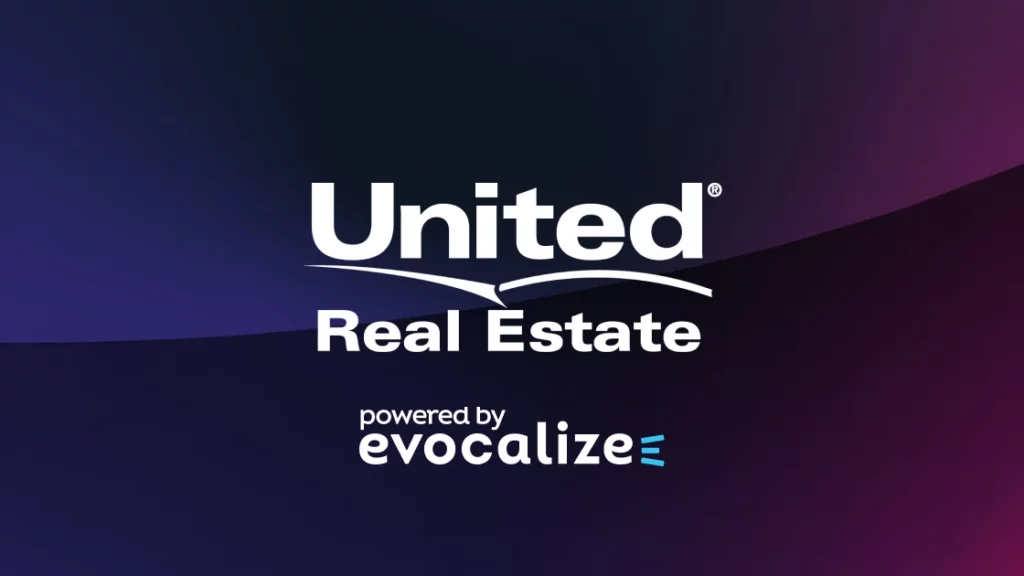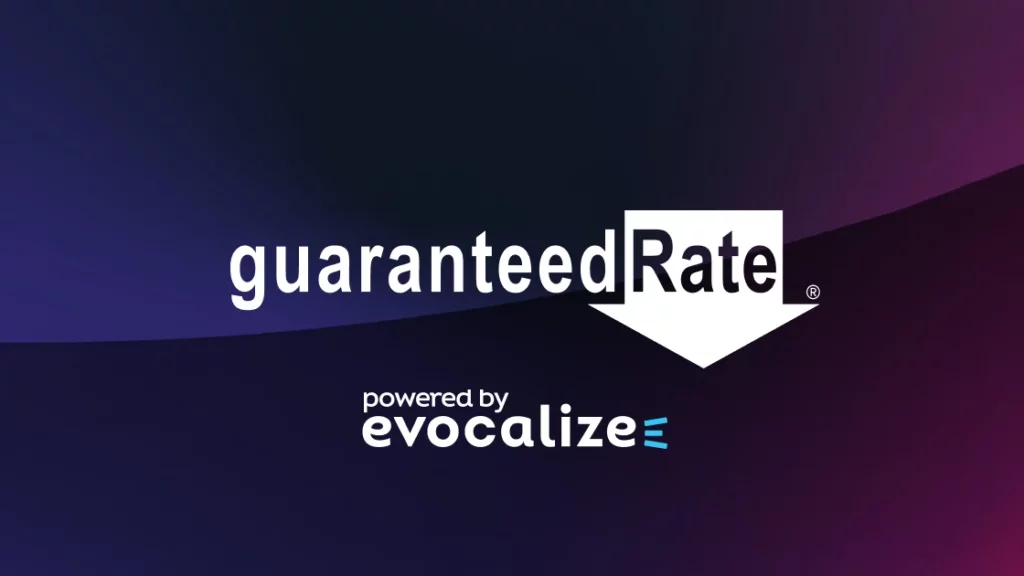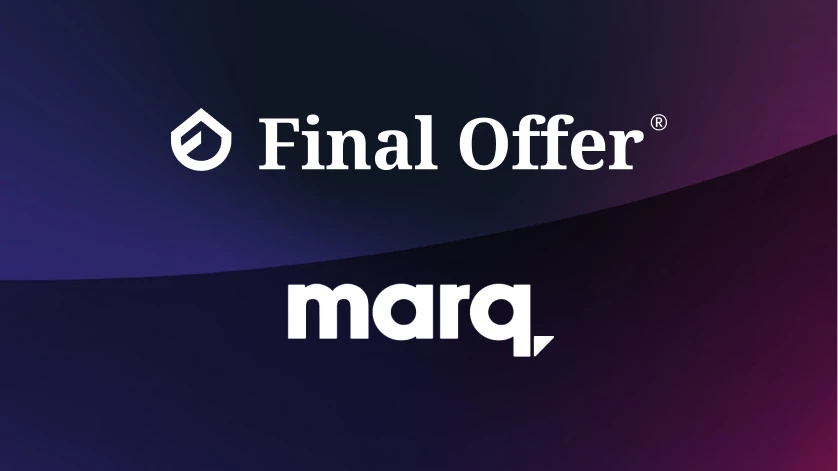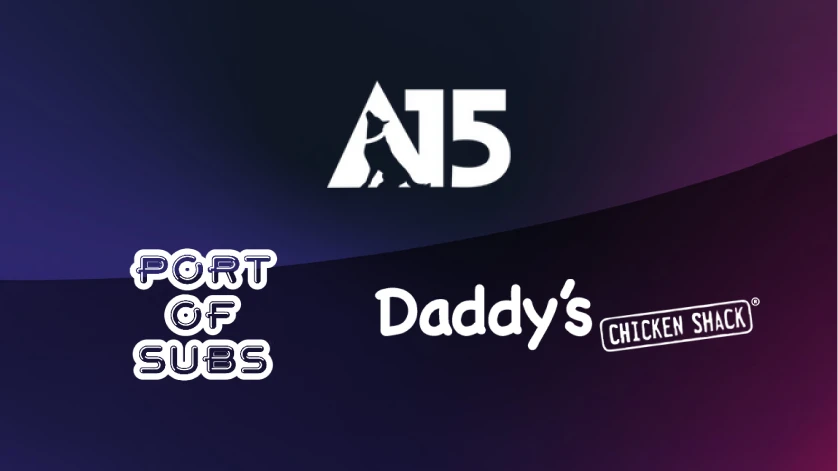
Localogy interview: Democratizing SMB marketing
Share
Recently our CEO Matthew Marx had the opportunity to speak with Mike Boland, Senior Analyst with Localogy and host of Localogy Insider, a video series that spotlights best practices and strategies and local commerce technology and SMB SaaS.
Below is a translation of the interview.
Mike Boland: We have a lot to talk about, but first let’s find out a little bit more about you for those unfamiliar with Evocalize.
Matthew Marx: Thanks, Mike. We’re a seven-year-old company headquartered in Seattle, Washington, with offices in Austin, Texas. We’re venture-backed by the largest venture capital firm in the Pacific Northwest, Madrona Venture Group, and the National Association of Realtors and their venture capital arm.
We produce, and we’ll talk about this throughout the course of our discussion, a software called a Collaborative Marketing Platform (CMP) and as you alluded, it lets two or more parties execute marketing programs together that they wouldn’t be able to execute on their own.
Mike Boland: You appropriately put that: sophisticated marketing and democratizing performance marketing. I want to get more into that concept of collaborative marketing and the types of organizations that may be decentralized. There may be just different factors that it really just hits their goals well, but before we get into some of that product stuff, let’s continue with some of the metadata around the company. If we could start off by telling us a bit about where Evocalize is as a business, coming up at the end of the first quarter of 2021. Any figures you can give us to give us a sense of operational scale?
Matthew Marx: If we talk about collaborative marketing and our product, we really have two customers. We have partners, big businesses that we go to market with, and then we have small businesses that use our product in conjunction with their big business partners. And we can get into that in terms of programs. We’ve been partners with Facebook for over five years. We helped them design some of their foundational advertising technology on the local end. Google came to use a couple years ago and asked us to partner with them. So for Facebook and Google, we’ve been the silent partner behind the scenes for quite some time with those guys. We’ve run over 750,000 local programs over the course of the last few years, and that’s accelerating. Hopefully we can get a chance to talk about the impacts of COVID and the digitization of local marketing in the course of these conversations, but the expansion right now and the transition is happening faster and faster every day, and our business is reflecting that, absolutely.
Mike Boland: So let’s go one level deeper on the product and the offering, and how its packaged and priced. You mentioned a few go-to-market paths both directly with SMBs, also through channels and through some of those larger partners. Give us the full picture of how you’re delivering it – how is it packaged and priced, what’s the breakdown in software versus other high-touch service in terms of the fulfillment end. How does all that look?
Matthew Marx: Great question. So if we break it down, we’re fundamentally a technology company. We build software, we have lots of software engineers that build our foundational technology. But technology doesn’t work on its own, it needs an overwatch. So 20 percent of our business is helping our partners get the most out of our software and providing a managed overwatch on top of our programs.
Our software is execution-oriented – our end users push a button and things publish – and you want to insulate them from the complexities of that, and make sure where the software and the technology doesn’t catch any things that go wrong. Humans are watching over that, so we have a 24-hour a day marketing management team that oversees all of our technology and works to catch anything that goes awry in the process, escalating to the platforms to get their help and resolution when needed.
But again, fundamentally we’re a technology company our partners like to work with. That’s foundationally what we do and we can talk more about that as we go. Sometimes our partners bring more service, sometimes they bring less service – either is okay with us.
Mike Boland: Yeah, that makes a lot of sense. You can adapt to whatever that partner need is, and its interesting, it seems like that strikes the right sort of hybrid approach. We always ask that question because its such a fundamentally strategic thing in terms of where on that sliding scale you are, because the unit economics of SaaS, of course, are very attractive in terms of just pure software. But of course in terms of higher value interactions and retention, it always requires somewhat of a human element. That sort of hybrid approach seems optimal.
Now let’s go back to the concept of collaborative marketing and also in light of all these partner personas we’re talking about. I guess what I’m getting at is, what are the specific demand signals that compel this concept of collaborative marketing? I used the term decentralization earlier….what are some of the things that compel it most?
Matthew Marx: It’s a great point. We think about elements that are necessary for great sophisticated, ROI-driving performance marketing, and frankly there are key ingredients that everyone needs. It just so happens that big corporations and direct-to-consumer corporations specifically have all of those data points in-house in most cases, and lots of other businesses don’t, so they’ve been prevented from getting great performance out of digital marketing. It’s really hard. Let me explain what I mean by that.
We think about it as a triangle: there are really three things that are absolutely critical to run the best marketing programs in the world. One is expertise and experience. If you’re hiring master’s degrees and folks with PhDs that have done marketing, they’ve done great performance marketing for years. They come into the game, the starting point, with expertise – they know where to start, they’re not starting cold. So they start with best practices to begin with. Local marketers, a lot of businesses, don’t have that. You’re busy running your local business, you don’t have time to become a marketing expert.
Two, technology. Right now we can bring technology for automation, but its hard for some folks to use technology that’s disconnected from the other tech that they use. So if you use a storage system, you use a CRM, you don’t really want to use a separate system to try and automate marketing, right?
Third is data, which plays into the technology piece. If you don’t have data, you cannot run marketing programs, and Facebook and Google and Amazon and LinkedIn and elsewhere – all the big guys run all the programs we run for large corporate programs through our technology. All rely on first-party data. What I mean by first-party data is either web signal customer database CRM lists. Those are all ingredients that are critical for success on the ground.
And so our go-to-market with all of our customers, whether they’re marketplaces, ecommerce companies, CRMs, technology providers, or what we call multi-location brands – corporate groups that sponsor local offices – they’re all fundamentally one of the groups. And usually it’s the local group, or the small group, that doesn’t have one or more of the those three ingredients. So the idea of collaborative marketing is that you, their partner, can enable them with a tool that integrates with the tools they already use. It integrates with the data at corporate, starts with best practices for the industry, ensures brand compliance and creative video sharing and really is a partnership in executing marketing programs like it really always should have been.
Mike Boland: It’s just always been too hard, and for a lot of those decentralized entities, data is so much more powerful and valuable when its unified as opposed to siloed and all over the place. So let’s go one level down, to the actual end user. So we talked about the partner organizations, your channels. Tell us two things: one, what’s the typical end user persona? Maybe it’s a small business, maybe it’s a franchisee, and then what does the product look like from their perspective?
Matthew Marx: That’s where the rubber meets the road. I talked about us having two customers in our business. We’re a B-to-B, or a B-to-B-to-B business. So when you’re a local user, say a real estate agent or insurance office, a mortgage office, a retail company, you’re doing the business of your business. You don’t want to learn marketing. So we’ll provide in conjunction with a non-competitive partner in the space – again, that could be a corporate group with their own stores – we provide a platform that makes it really simple to run compliant, performant programs by pushing a button in the tools these local businesses already use.
We work with our partner business, say again the corporate group in a distributed organization, to set up what we call Blueprints. And Blueprints are unique to that organization. They’re developed without writing code, but they’re very unique to the organization and they provide the end business, the end user in some cases, literally a button to push, and a budget slider or a button to push, and a couple of questions they can answer so the local business can put their thumbprint on the marketing program. But the complexity is taken out of it. So we get pretty great results from an ROI perspective and we save our users a ton of time in the process.
Mike Boland: So you think about that a lot. So as we like to say and do on the show, show rather than tell. Are there any examples or mini case studies or performance metrics or anything you can specific to quantify all of the above?
Matthew Marx: Yes, we have them for each of our target markets. I mentioned marketplaces. We work with a real estate marketplace called Realtor.com, one of the largest marketplaces out there. We have wired in, they’ve actually build user interfaces on top of our public API, set very simple user interfaces where agents and local brokerages can log into their system that they’re already using to do other things with Realtor.com, log in to make a few choices and effectively run advertising and marketing programs that are very sophisticated, targeting people who are shopping for homes in their area right now on the site Realtor.com, on the marketplace. And that results in disproportionate and outsized performance – we have tens of thousands of users using that system.
Similarly, we have what we call a multi-location brand, a franchisor called Exit Realty also in the real estate space, that has a centralized brokerage offering 500 offices and over 20,000 real estate agents that all have their own unique login to Exit Realty’s marketing portal. Everything we do is branded as the local brand, so it’s their tool and the agents have specific programs that they can push buttons and run, say “promote my home” or “find new leads” for folks in the neighborhood to sell their house. Brokers have their own programs where they can actually set up more sophisticated marketing programs that have rules built-in so the local office, one of the 500 offices, might set up a rule-based program. Every home listing that hits the system now gets marketed in a certain way without them having to touch any of the knobs. Think of it as product inventory. Really, its genericized in that way and what happens is we end up giving the central organization from great reporting. The system learns and gets smarter from all of the use of the network over time, so performance for everyone improves for every new user that’s added to the system. And the local users get phenomenal performance. We have users that spend as little as $200 get 100 qualified leads for their system.
So a few datapoints. Really we have two metrics we look at, Mike. One is time savings. We have saved Exit Realty, for instance, we’ve taken them from an average of nine hours a week spent in marketing to nine minutes a week per user, and we’ve increased their ROI by 400 percent. There’s a case study on our site, but those are the types of metrics that bring real value to small businesses and what we get excited about.
Mike Boland: Time is something that particularly resonates with them, and of course nine hours to nine minutes, that’s impressive. So let’s go beyond the structural merits and the demand you’ve characterized and the execution to the timing. So we’re going to go from the why, to the why now. Of course, the elephant in the room – you mentioned it earlier – is COVID. In the COVID era, demand signals have shifted. The ground has shifted, generally speaking all things digital or software-oriented in marketing and ecommerce have tended to perform well with those realities, but how has it particularly affected your business? Have you pivoted or leaned into any new demand signals, and what’s different about the business?
Matthew Marx: COVID’s impacted us a lot. When COVID first started, of course you know our headquarters is in Seattle so we were hit very, very soon and very early. We got together as a leadership team in our company and thought about what we could do the help, and we decided that the first thing we could do….we had a lot of data on local marketing. So we began publishing on COVID marketing report on Facebook, one of our largest partner channels, month-over-month. We looked at things like, is it valuable to advertise right now, this month, in Facebook and on digital channels? And you look at those, and again there’s a lot of scale passing through our technology and so we’re able to get a pretty large, aggregated look at demand, and what we saw was fascinating. Demand fell off for about a week, and performance fell off for about a week about this time last year frankly. And then it accelerated, and our business accelerated with it as folks were forced, some for the first time, to change or shift their marketing mix from print and postcards and mailers to digital. So performance just skyrocketed as people spent more and more time in digital channels.
So we know now that digital channels, in comparison to print, radio, TV, account for over 60% of the time that people spend their time getting information. That only accelerated with COVID, and the interesting part about that, Mike, is that corporate groups pivoted much faster than local groups. So maybe not surprising. Corporate marketing groups changed and so they’re all of a sudden are spending two-thirds of their money because they’re spending where the eyeballs are. They’re spending according to time spent, right? So two-thirds of the money shifted to digital spend, and only one-third on traditional radio/TV/print and local marketing is behind.
As for local marketers, it’s just harder for them, so they’re trying to shift, but they’re not there yet. Our data suggests they’re still spending less than 50% of their budgets on digital, but they’re accelerating quickly. We think that’s sticky. We think that this has become a training group that will last.
Mike Boland: One of the questions we keep asking ourselves, and all of the market leaders we’re talking to, is what of those new behaviors on the part of the businesses will sustain semi-permanently? I mean they’ve been forced to develop new muscles over the past year, so will they be perpetually exercising those muscles in the post-COVID world?
Matthew Marx: I think they will. I mean, it’s still complicated for them, though.. If people are following the developments of the privacy changes and policy changes around digital privacy and policy, the thing most folks are not talking about, some of these changes that restrict use of data collection and effectively the bedrock of digital advertising, the third-party cookie is going away. Its going away over the course of the next two years.
One thing that folks don’t spend enough time talking about is the impact on small and local business advertising of the cookie going away. That’s going to make things harder for local businesses. The third-party audiences that have been there that have been the bedrock of local advertising are not going to be there in the same way. Yeah, the walled gardens are really where you need to participate in.
So COVID is seismic, and a seismic change. I think you’re right. I think it’s helped develop new muscle even further as the cookie is going away. And frankly, as solution providers, we have solutions to these problems, but we as technology solutions providers need to do a better job helping local businesses get through this, and not see the disruption they could otherwise see in this cookie-less future.
Mike Boland: Earlier we were talking about the value of unified data, and in the cookie-less future, first-party data is shut off. And as a small business, your first-party data is not that large. But if you’re a large organization that can be shared with different trends and a network effect, that certainly sort of solves that problem.
Now, let’s take a look forward. Of course, to the extent that you can without giving away your roadmap details, but I’m curious where you’re looking next in terms of areas of expansion. Where there’s unmet need where what you build kind of maps well to certain areas, whether it be new verticals or new functional expansion in terms of new feature sets, either way.
Matthew Marx: I’ll start back at the triangle I talked about earlier with the intersection of experience, technology and data, those critical ingredients for marketing performance success. That’s not unique to any one industry. Every industry has those characteristics and has those needs. So we started in the real estate business. The real estate industry is highly fragmented with interesting working relationships with contractor-employee relationships. But this idea that financial services companies, wealth advisor networks, insurance companies retailers, restaurants, fitness centers, service providers….they all have the same problem, and really the solution is the same.
So we’ve developed in our technology an industry-agnostic approach that I mentioned earlier in terms of Blueprints so that every industry and every company can have their own specific programs that can unlock this potential. So we’re moving across verticals. We’re already in wealth advisories, we’re already in insurance and mortgage. We’re moving into restaurants, so that’s already going on in terms of product functionality. Those new verticals bring new demands, and so we think about new channels, new platforms first and foremost.
So I talked about Facebook and Instagram, and I’ve mentioned Google. We’re launching right now, we’re in beta with a search product to make Google Search easy to run for local businesses. We’re exploring and in proof-of-concepts with platforms like LinkedIn and Amazon, and as you move into new verticals, the demands change and the platforms change. We’re looking at those new verticals and experimenting with them. We intend to launch two to three more platforms on our system this year and then taking that one step further, our mission is to democratize sophisticated marketing. That means making it simple.
We’ve done some cool experimentation with what we call a Magic Blueprint that can cross platforms so one program, or many programs that a local marketers could run that optimizes across platforms so where the demand can be met or the ROI is highest, in Facebook or Instagram, we go where its highest in Google, where its ties to Amazon, the demand automatically shifts and pulls in ROI because at the end of the day the local marketer doesn’t care about where they’re performance comes from. They just want results. So that’s some exciting stuff we’re working on, we’re pretty fired up about this year!
Mike Boland: I imagine you have one eye on some of the emerging platforms too. There’s TikTok, Clubhouse, it’s sort of under-developed, uncertain. There’s even some geopolitical uncertainty around it, but I imagine you’ve got one eye on what’s happening there, and the audiences they’re building, and how that fits in. So we’re just about the close out here, what are you most excited about? You told us a little bit from a product perspective the things you’re working on, the things you’re rolling out. What are you most excited about, Matt, in terms of where the business is and what you’re working on now and what we can expect from Evocalize for the remainder of 2021?
Matthew Marx: Mike, I get particularly fired up about this stuff because this is business-changing. Not just what we’re doing, but the concept of this collaborative marketing is business-changing for a lot of organizations. Local marketers, for the first time, we have the sophistication to be able to hand down simple tools to them, to generate their own demand, to hold the keys in their own hands that drive their own business.
Our proof-points actually for our corporate-only clients, when we compare performance from our corporate-owning clients and our collaborative marketing local partners, our local partners actually get better performance the majority of the time than our corporate partners. That’s becuae the local thumbprint matters. The local stamp, the local language, the local imagery – it matters in results. So I’m really excited about where that’s going, and where the industry is going. I think we can be better. I think we need to be better. So I’m particularly fired up about that, and about really handing the power and keys down to truly democratize sophisticated marketing with end users.
I’m also excited about partnering, because our go-to-market model is a partnership-based model. We feel that by integrated our tools into their existing CRM, your existing email automation, your existing SMS or chatbot integration, you’re giving a one-stop shop. So there’s always been this false choice of “best of breed” version versus “best in class” and we feel like we can collapse that together, Mike, and give folks the combination of both through our go-to-market model and muscle.
Mike Boland: That’s exciting. Its going to be fun to watch as an analyst. We’re going to keep our eye on you, and possibly have you back on the show to talk about how all that’s panning out in the near future. I want to thank you, Matt, for spending time with us.
Matthew Marx: Mike, It’s been great. Thanks so much for having us, fun conversation.
About Evocalize
Evocalize’s Collaborative Marketing Platform is used by multi-location brands, technology platforms (like CRMs), and online marketplaces to equip their locations, agents, and users at scale with sophisticated, push-button easy digital marketing that drives real business results and revenue. Evocalize is a Meta Business Partner and a Google Business Partner. Evocalize’s technology supports businesses across industries, including real estate, mortgage, insurance, financial services, restaurants, franchises, travel, and more. Over 1,500,000+ sophisticated digital marketing programs have been run using Evocalize technology, generating millions of leads, and leading to thousands of transactions to date. Evocalize is backed by Madrona Venture Group, Move, Inc., Second Century Ventures, and Habanero Ventures. For more information, visit evocalize.com.
Share






